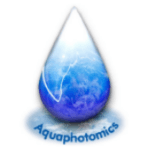We are very pleased to announce that a new article on Aquaphotomics has been published in “Journal of Chemometrics” (23 June, 2020).
“Near-infrared multivariate model transfer for quantification of different hydrogen bonding species in aqueous systems” by Jun-Li Xu, Ronan M. Dorrepaal, Jose Martinez-Gonzalez, Roumiana Tsenkova, Aoife A. Gowen.
It is challenging to achieve consistent quantification of hydrogen-bonded water species by fitting Gaussian bands on spectra collected from different instruments, especially when the spectral resolution is low. Therefore, this work aims to propose a near-infrared (NIR) multivariate calibration model transfer method to obtain reliable, consistent, and reproducible results from different spectroscopic instruments. A composite method of Gaussian deconvolution, multivariate curve resolution-alternating least squares (MCR-ALS), and partial least squares (PLS) was developed to quantify five water species (labeled as C1, C2, C3, C4, and C5), respectively, assigned to non-hydrogen-bonded, singly hydrogen-bonded, doubly and triply hydrogen-bonded species, distorted icelike structures in the liquid phase, and fully hydrogen-bonded species showing ice-like structure. Primary instrument (iS50) was selected due to the highest spectral resolution and spectra (7500–5845 cm−1 with spectral resolution of 0.5 cm−1) were acquired from four types of salt solutions. The developed PLS model yielded a high prediction performance when applied on two independent prediction sets with R2P higher than 0.95 and RMSEP less than 0.009 for prediction of C1-5. Model built with primary spectra was successfully transferred to spectra of secondary instrument (iN10), producing RMSEP less than 0.010. Transferred model applied on secondary instruments (NIRECO and MPA) showed that fully H-bonded species in deionized water decreased as temperature increased, while non-hydrogen-bonded and singly hydrogenbonded demonstrated an opposite temperature dependence. Our results confirmed that it is promising to transfer the calibration model from a sophisticated spectrometer to a simple spectroscopic instrument in terms of quantification of hydrogen-bonded water species.
The article can be viewed and downloaded at https://doi.org/10.1002/cem.3274 .
